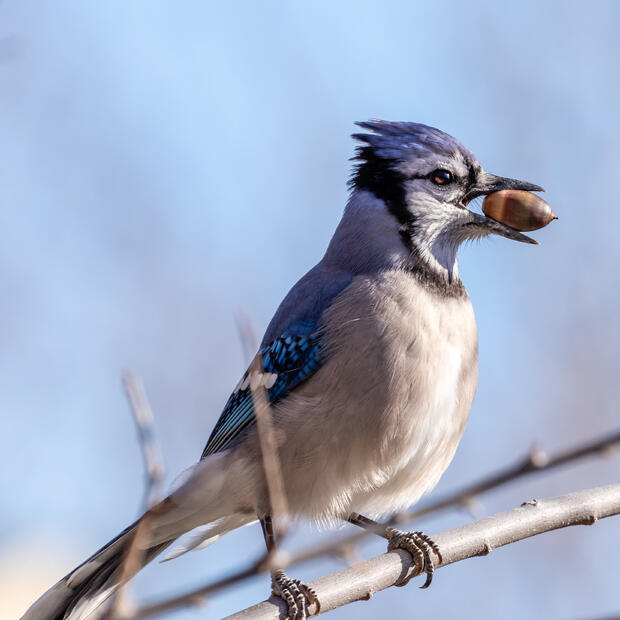- Division of Fisheries and Wildlife
Media Contact
Media Contact, MassWildlife

Have you been dodging a constant barrage of falling acorns, startled by the thwack of nuts pelting your car’s roof, or raking up mounds of acorns in your yard? Like many trees, oaks go through cycles where they produce more seeds in some years than in others. These times of high production, known as “mast years,” occur every 2-3 years. While an abundance of acorns may be an annoyance to some, it’s a welcome buffet for wildlife that are preparing for a long cold winter.
Acorns are high in calories, fat, and essential nutrients like calcium, potassium, and phosphorus. Squirrels and white-tailed deer rely heavily on acorns in the fall and during the leaner winter months. Birds like blue jays, wood ducks, ruffed grouse, and wild turkeys also eat acorns. Acorns feed small rodents like mice and voles, as well as larger mammals like black bears.
Most animals favor the sweeter acorns of white oaks and only resort to eating red oak acorns (which contain higher levels of tannins making them bitter and harder to digest) when all other options are exhausted. Animals that hoard food, like squirrels and blue jays, stash hundreds of red oak acorns. Most of those hidden acorn snacks are never recovered and some eventually sprout into new oak trees far from where they were dropped thanks to forgetful critters.
Acorns are packed with potential, containing the blueprint for an oak tree. A mature oak can shelter and feed countless creatures throughout their lifetime. Over 10 species of oak can be found in Massachusetts in a variety of upland and wetland habitats, from scrub oaks that grow in the dry sandplains of Cape Cod to chestnut oaks on ridges of the Connecticut River Valley. Oak leaves support over 500 species of moth and butterfly caterpillars, which in turn provide food for breeding birds.
So next time you spot an acorn on the ground, or narrowly escape a projectile nut, take a moment to appreciate the incredible bounty stored inside that little shell.


